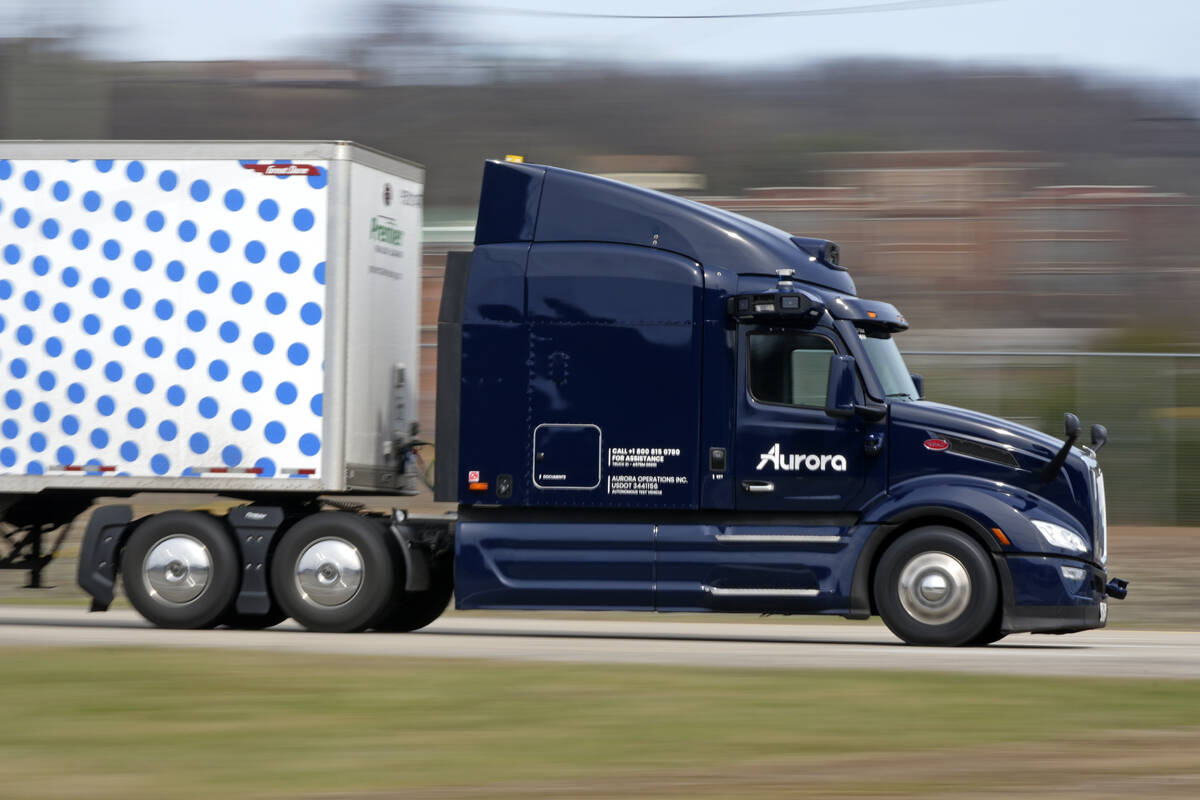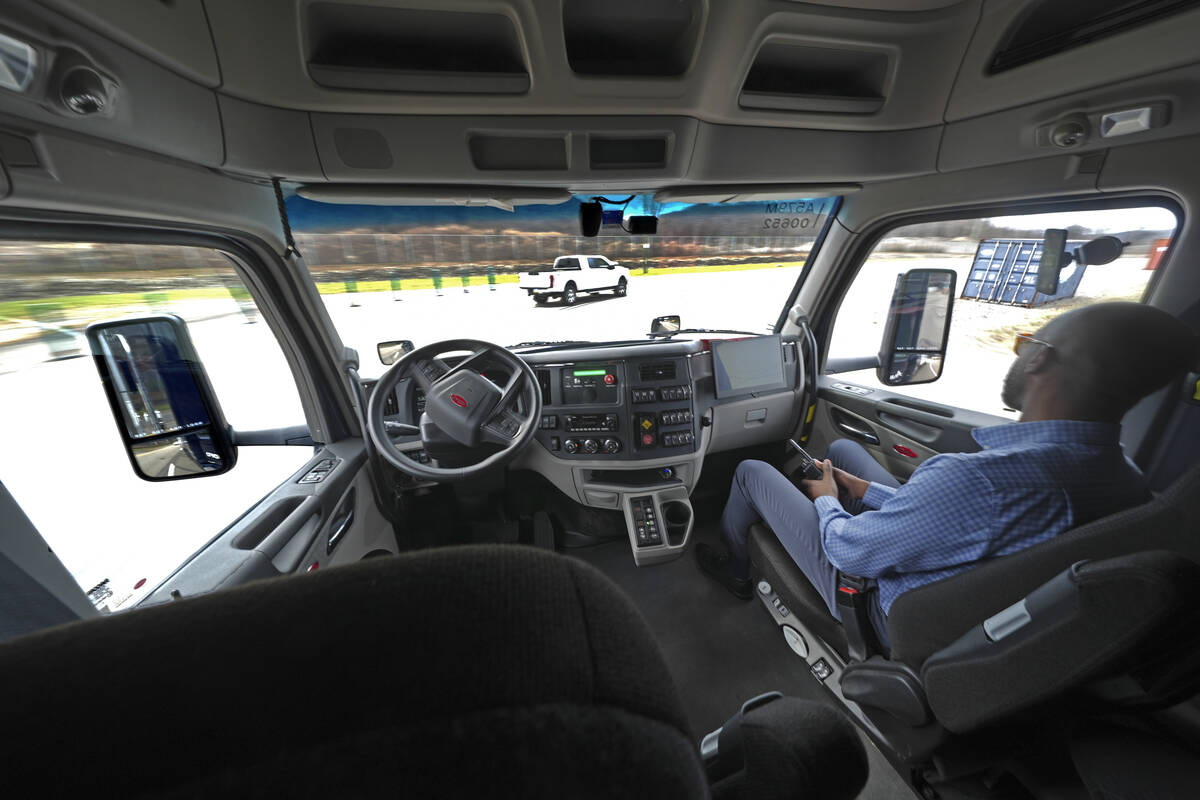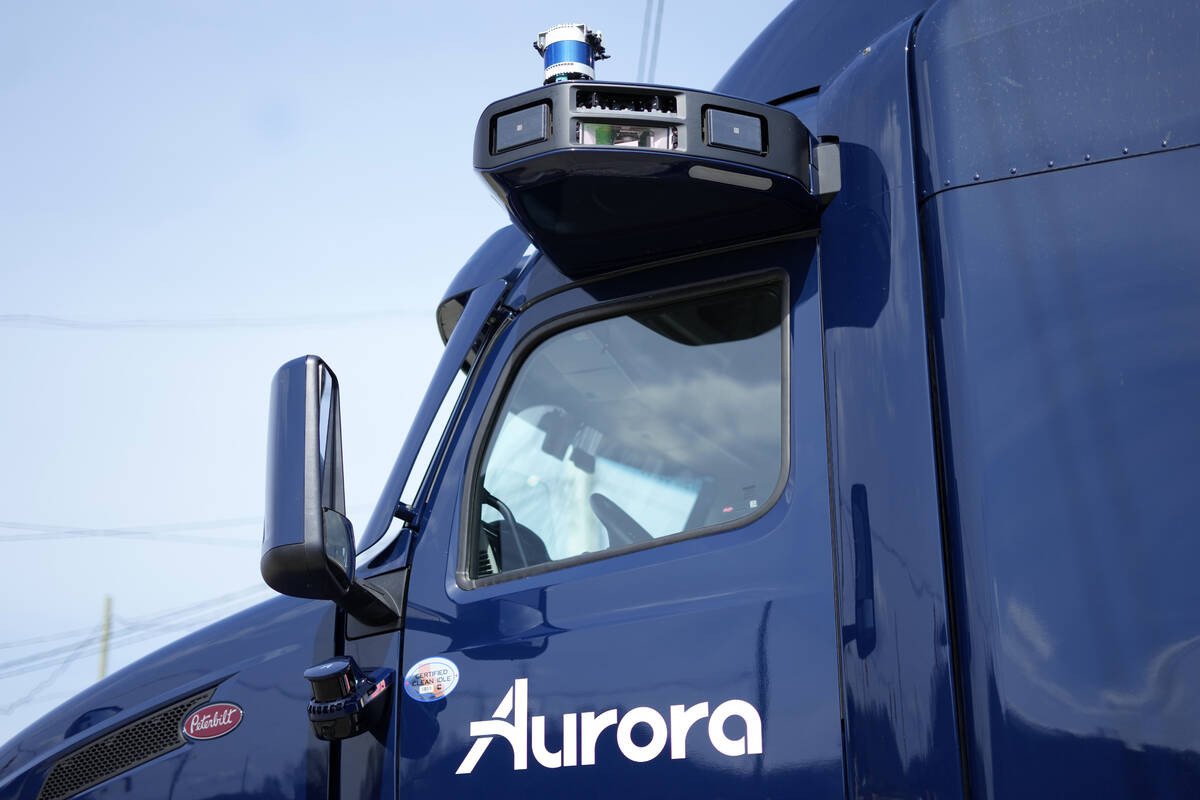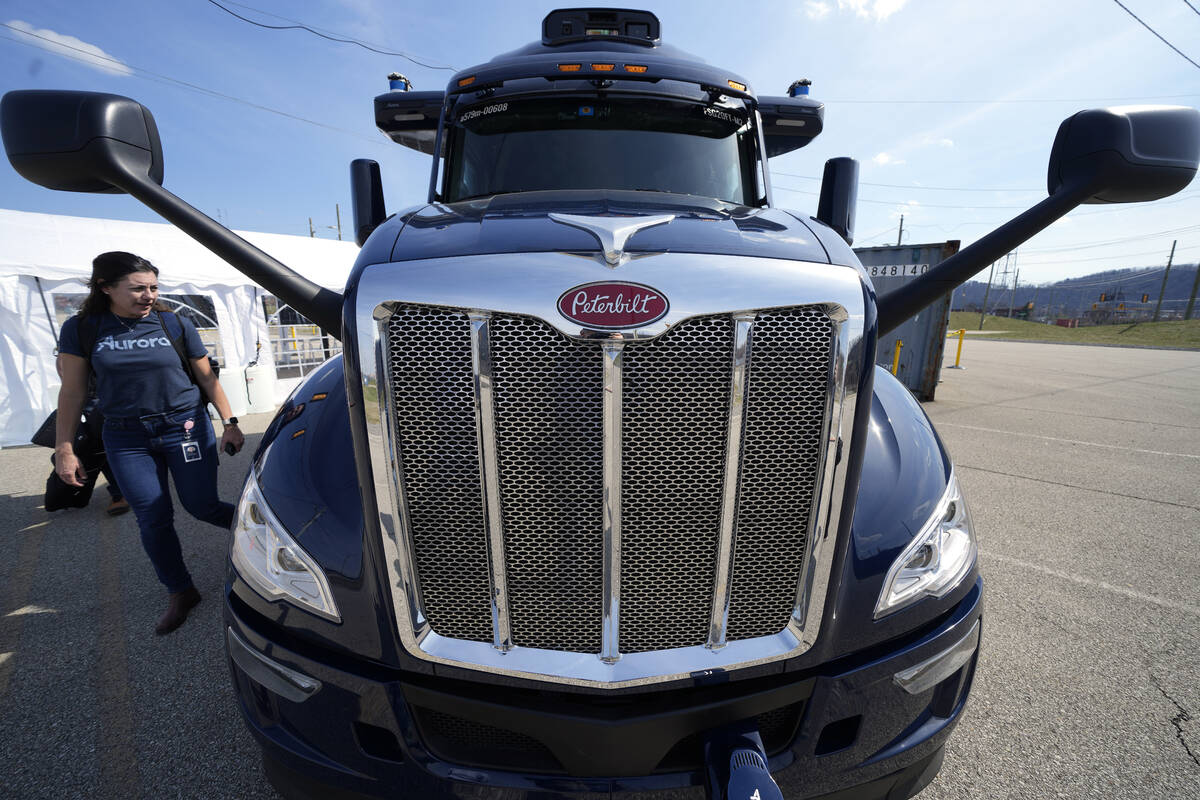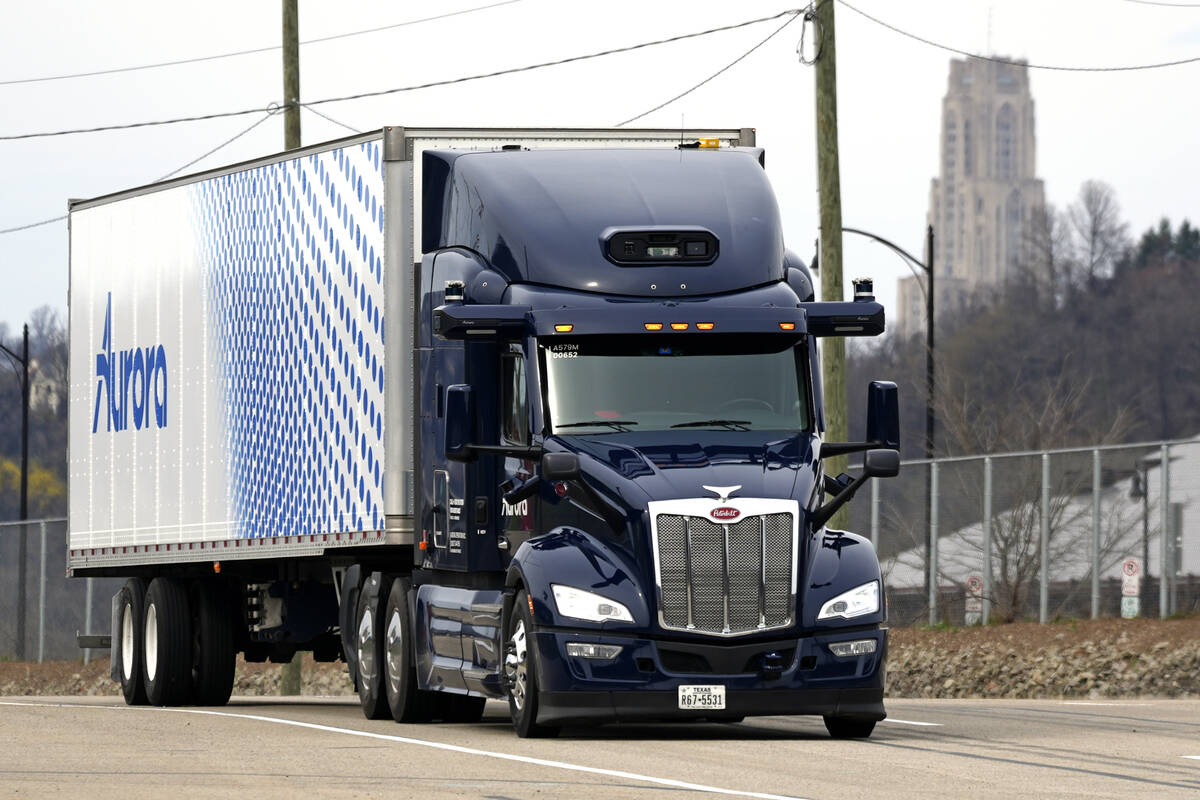Driverless tractor-trailers? Future is near for self-driving trucks on US roads
PITTSBURGH — On a three-lane test track along the Monongahela River, an 18-wheel tractor-trailer rounded a curve. No one was on board.
A quarter-mile ahead, the truck’s sensors spotted a trash can blocking one lane and a tire in another. In less than a second, it signaled, moved into the unobstructed lane and rumbled past the obstacles.
The self-driving semi, outfitted with 25 laser, radar and camera sensors, is owned by Pittsburgh-based Aurora Innovation Inc. Late this year, Aurora plans to start hauling freight on Interstate 45 between the Dallas and Houston areas with 20 driverless trucks.
Within three or four years, Aurora and its competitors expect to put thousands self-driving trucks on America’s public freeways. The goal is for the trucks, which can run nearly around the clock without breaks, to speed the flow of goods, accelerating delivery times.
The image of a fully loaded, 80,000-pound driverless truck on a super-highway at 65 mph or more may strike a note of terror. A January poll by AAA found that a majority of Americans — 66% — said they would fear riding in an autonomous vehicle.
But in less than nine months, trucks with Aurora’s systems will start carrying loads between terminals for FedEx, Uber Freight, Werner and others. Aurora and most rivals plan to start running freight routes in Texas, where snow and ice are generally rare.
For years, it seemed as though the initial venture for autonomous vehicles would be ride hailing in large cities. But General Motors’ Cruise robotaxi unit is struggling in the aftermath of a serious crash. And Alphabet’s Waymo faces opposition to expanding its autonomous ride service in California. So self-driving trucks are poised to become the first computer-controlled vehicles deployed in widespread numbers on public roads.
However, safety advocates warn that with almost no federal regulation, it will be mainly up to the companies to decide when the semis are safe enough to operate without humans on board.
Aurora and other companies argue that years of testing show their trucks will be safer than human-driven ones. They note that the vehicles’ laser and radar sensors can “see” farther than human eyes. The trucks never tire, get distracted or become impaired by alcohol or drugs.
“We want to be out there with thousands or tens of thousands of trucks on the road,” said Chris Urmson, Aurora’s CEO. “And to do that, we have to be safe. It’s the only way that the public will accept it. Frankly, it’s the only way our customers will accept it.”
Phil Koopman, a Carnegie Mellon University professor who studies vehicle automation, agreed that self-driving trucks can theoretically be safer. But he cautioned that the vehicles’ computers inevitably will make errors. And just how the trucks fare on real roads, he said, depends on the quality of their safety engineering.
With billions of dollars in investments at stake, Koopman said, he wonders how the companies will balance safety decisions.
“Everything I see indicates they’re trying to do the right thing,” he said. “But the devil is in the details.”
On the test track, reporters saw Aurora’s semis avoid simulations of road obstacles, including pedestrians, a blown tire, even a horse. The trucks spotted obstacles more than a quarter-mile away and avoided them.
But they were running at only 35 mph (56 kilometers per hour) in a controlled environment. (The trucks are being tested with human safety drivers on Texas freeways, at higher speeds.)
Since 2021, Aurora trucks have autonomously hauled freight over 1 million miles on public highways with human safety drivers on board. There have been only three crashes, Urmson said, all caused by mistakes by human drivers in other vehicles.
A federal database that started in June 2021 shows at least 13 crashes with other vehicles involving autonomous semis, including three involving Aurora. In all cases, the crashes were caused by other vehicles.
Last month, Urmson said the publicly held company expects to turn a profit by late 2027 or early 2028. To do so, Aurora must deploy thousands of trucks, hauling freight and collecting a per-mile charge from customers.
Aurora, Urmson said, won’t compromise safety, even if doing so might delay turning a profit.
“If we put a vehicle on the road that isn’t sufficiently safe — that we aren’t confident in the safety of — then it kills everything else,” he said.
The company’s competitors — Plus.ai, Gatik, Kodiak Robotics and others — also plan soon to put driverless trucks on the roads hauling freight for customers. Gatik expects it this year or next; the others haven’t set timetables.
Don Burnette, CEO of Kodiak, said freeways are a better environment for autonomous vehicles than cities where ride-hailing robotaxis have been running. There are fewer pedestrians, and fewer unexpected things happen.
At a Buc-ee’s mega convenience store along I-45 south of Dallas, the prospect of driverless semis struck a note of fear.
“It sounds like a disaster waiting to happen,” said Kent Franz, a high school basketball coach in Chandler, Oklahoma. “I’ve heard of the driverless cars — Tesla, what have you — and the accidents they’ve been having. Eighteen-wheelers? Something that heavy, relying on technology that has proven it can be faulty? Doesn’t sound very comfortable to me.”
No federal regulations specifically cover autonomous vehicles, Koopman of Carnegie Mellon noted. And most states have none. As a result, he said, the public must trust the companies.
Federal agencies lack authority to stop autonomous vehicles from going on the roads. If something goes wrong, though, they can require recalls or order trucks out of service.
The companies say they can help address a truck driver shortage, estimated by the trucking industry to be 64,000 drivers. Yet there also are worries that autonomous trucks eventually will supplant human drivers and cost them their livelihoods.
Aurora’s Urmson said he thinks driverless semis will complement the work already done by human drivers.
“If you’re driving a truck today,” he said, “my expectation is you’re going to be able to retire driving a truck.”



